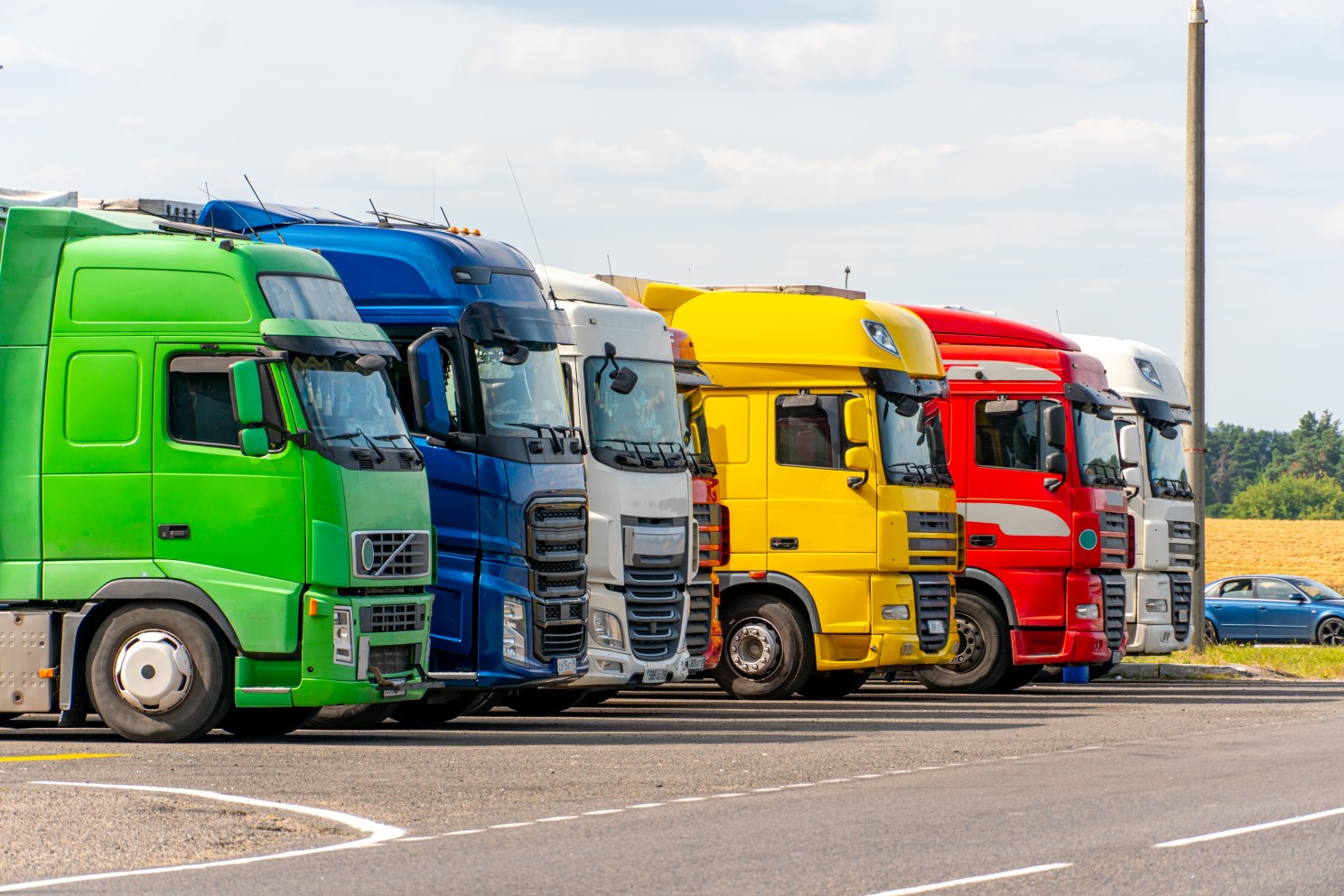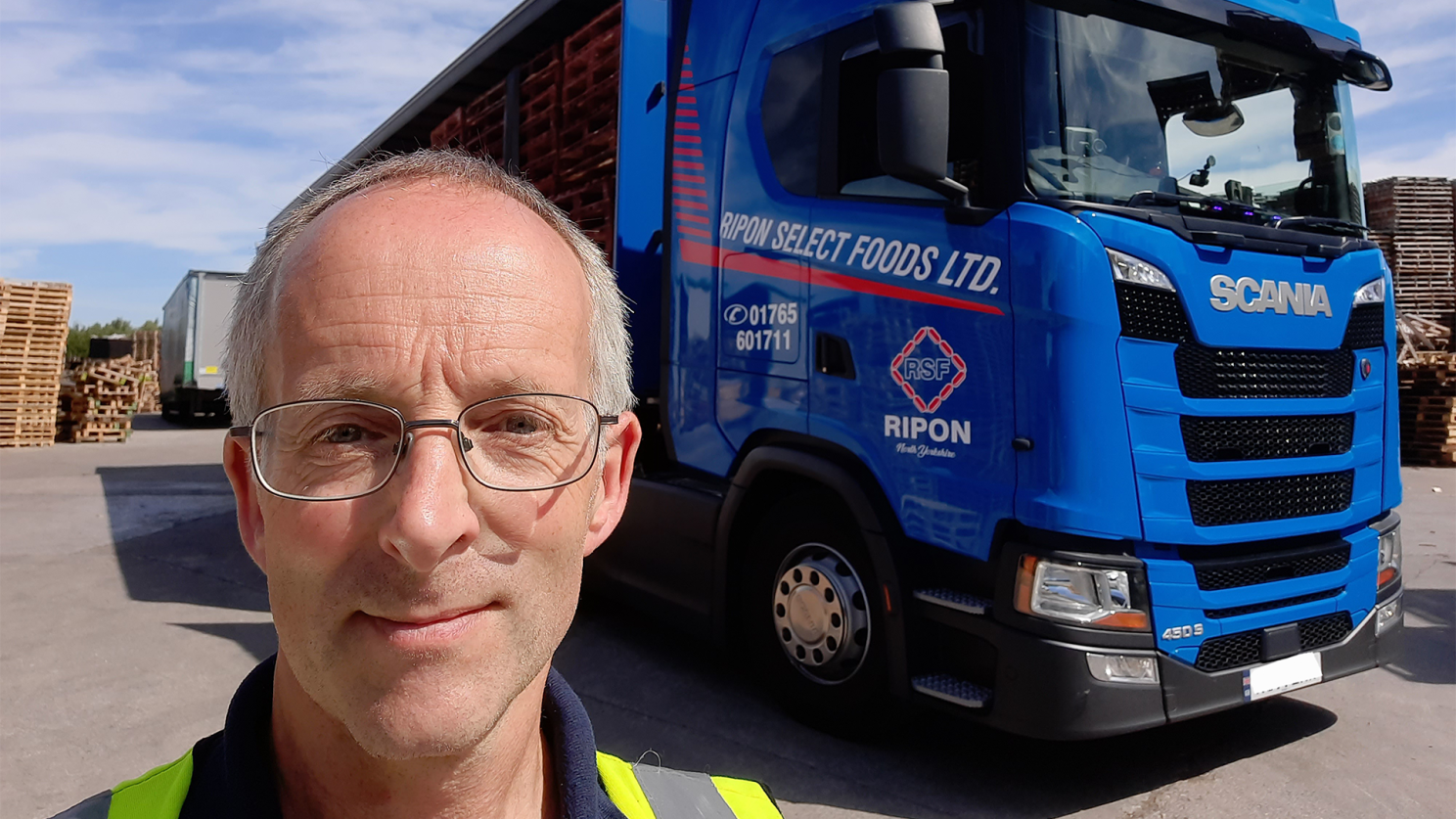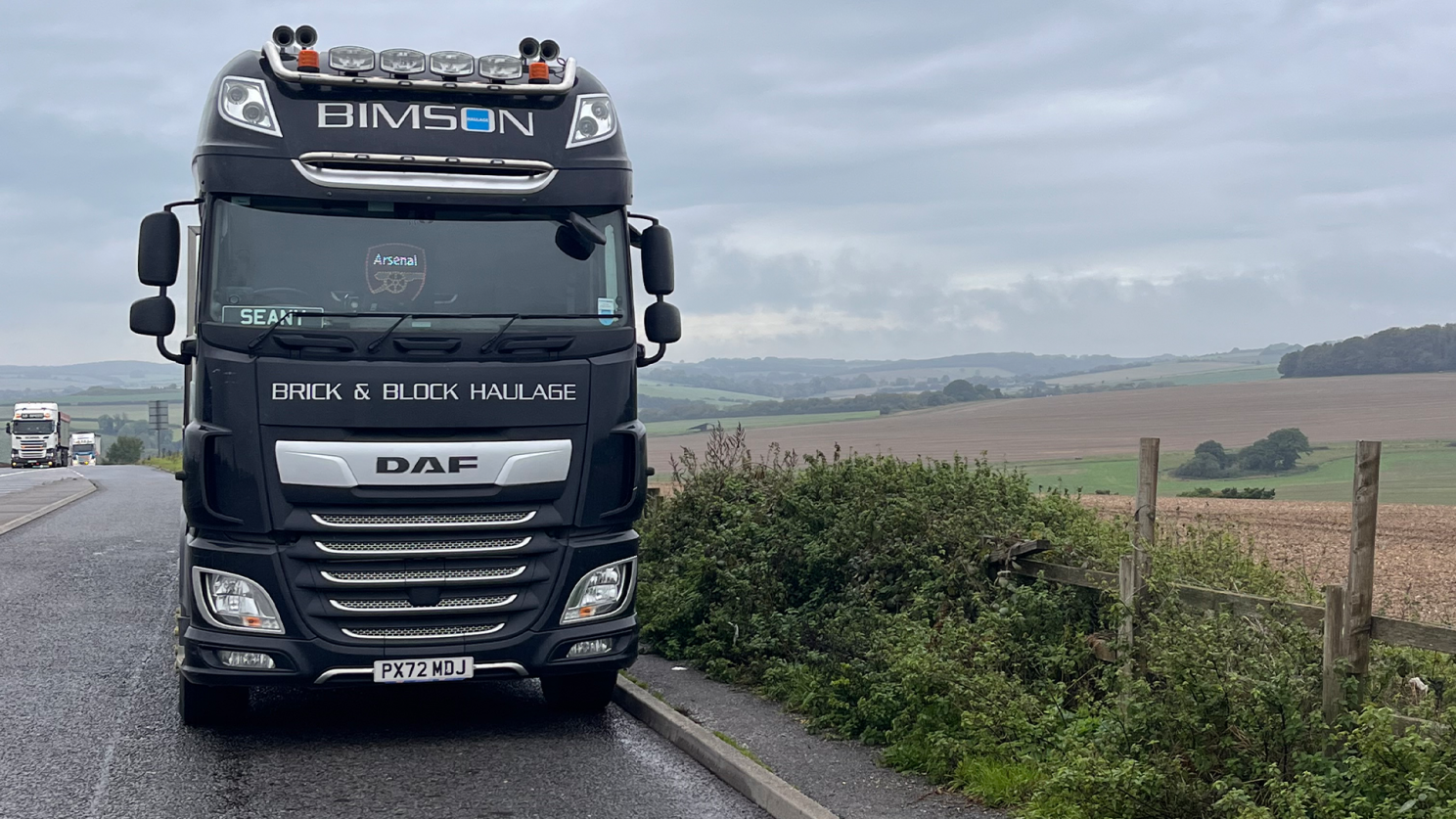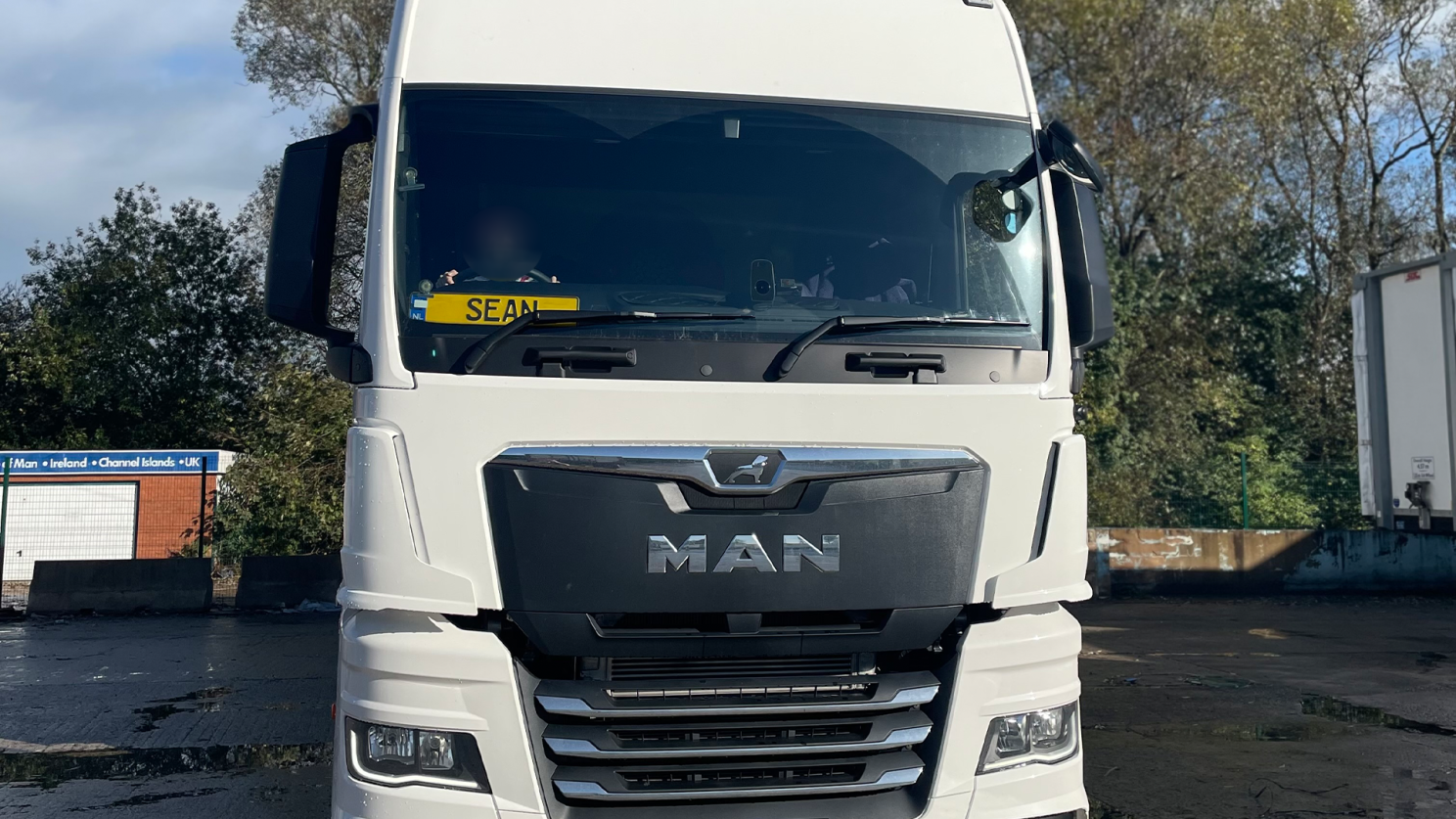
Susie Jones
Сказки дальнобойщика: истории с большой дороги
Создано: 22.08.2024
•
Обновлено: 22.08.2024
Мы хотим пролить свет на сообщество грузоперевозчиков и поближе познакомиться с людьми за рулем.
Узнайте больше о водителях, доставляющих ваши товары: от вертолетов, приземляющихся перед их грузовиками, до автомобилей, выезжающих не на ту сторону автострады.
Алан
Алан водит машину уже 23 года и решил присоединиться к индустрии после того, как послушал песни Элли Томсон о вождении грузовиков. Когда его спросили, что ему больше всего нравится в этой работе, он ответил, что "одиночество, которое приносит вождение грузовика, - это полное отделение от домашней жизни".
Грузовики Volvo - его любимые машины, на которых он путешествует по Великобритании, перевозя товары Amazon. По его словам, он перевозил множество интересных товаров: "Выбор безграничен - только подумайте, что продает Amazon".
Водителям, которые паркуются на ночь, сложно развлекаться во время простоя. Однако опытные водители, такие как Алан, разработали свой вечерний распорядок дня до мелочей. По его словам, он "любит смотреть Sky TV через iPad", когда остается на ночной стоянке.

Для водителей, которые пытаются развлечься за рулем, мы подготовили список способов предотвратить наступление скуки.
Хотя долгие часы в дороге многим могут показаться однообразными, Алан объясняет, что всегда есть что-то, что заставляет его быть в тонусе.
"Самое безумное, что я видел за рулем, - это вертолет, приземлившийся прямо передо мной, - объясняет он, - и это далеко от монотонной репутации, которая десятилетиями окутывала эту отрасль.
Имея за плечами 23 года работы в этой отрасли, Алан предлагает несколько советов, которые помогут сохранить свежесть ваших зубов во время путешествий.
Он объясняет: "Совет, который я бы дал всем новичкам в этой индустрии, - всегда помнить о том, что зубная щетка должна быть заряжена".
Ричард
36 лет назад Ричард начал свою карьеру в сфере грузоперевозок и никогда не оглядывался назад. Он увлекся вождением, когда вместе с двумя старшими братьями помогал доставлять грузы по всей Великобритании.
"Мне нравится получать груз и отправляться в путь. Я сам решаю, когда мне делать перерыв и где парковаться. Быть в дороге и путешествовать по всей Великобритании - это здорово", - объясняет он.
За время своей карьеры он побывал в Милане (Италия) - изнурительном путешествии даже для самых опытных водителей. Когда его спрашивают, как он развлекается во время поездок, он отвечает: "Я люблю слушать музыку и смотреть фильмы в свободное время".

На каком грузовике лучше всего это делать? "Это должен быть Scania Next Generation 450S", - говорит он.
За 30 лет работы в отрасли Ричард не раз сталкивался с безумными историями и необычными поставками: "Я видел машину, которая ехала по автостраде в неправильном направлении, съезжая со скользящей дороги. Самое интересное, что я перевозил в кузове грузовика, - это парадный флаг в честь Дня святого Уилфреда".
Хотя он по-прежнему любит открытые дороги, Ричард утверждает, что иногда за это приходится платить. Он предлагает отличное понимание реальности этой профессии и советы для тех, кто хочет присоединиться к индустрии.
"Очень хорошо подумайте, подходит ли вам такая карьера. Ожидайте долгих часов работы и отсутствия семейной жизни".
Шон
Шон вырос в семье водителей, поэтому грузоперевозки были у него в крови, и 20 лет назад он сел за руль и продолжил свою карьеру в сфере грузоперевозок.
У этой работы много плюсов, но больше всего Шон любит свободу, которую она дает. Эта свобода привела его в Шотландию, где он работает раз в шесть недель. В этих долгих поездках его развлекают звонки друзьям и просмотр телевизора.

Кроме того, стоянки для грузовиков сыграли для Шона решающую роль в борьбе с изоляцией, которую приносит вождение. Стоянки для грузовиков часто становятся ульем активности, позволяя Шону встретиться с друзьями во время путешествий.
Эти пит-стопы - прекрасная возможность услышать безумные истории от других водителей грузовиков. Как и Ричард, самой странной вещью, которую Шон видел в своих путешествиях, была "машина, едущая в темноте по автостраде не в ту сторону" - история, слишком распространенная среди водителей грузовиков.
DAF XF 530 - любимый грузовик Шона для перевозки строительных материалов по всей Великобритании. Он советует всем, кто хочет сделать карьеру в сфере грузоперевозок, "просто идти к цели!".
Дэйв
Дэйв водит грузовики уже 30 лет и успел побывать в Дании и Испании. Когда он не путешествует на своем любимом грузовике Volvo FH, он любит смотреть сериалы в комфортной кабине.
"Поведение некоторых водителей автомобилей дало мне возможность рассказать несколько безумных историй", - объясняет он. Однако, когда мы спросили Дэйва о самой интересной вещи, которую он перевозил в кузове своего грузовика, он не стал скрывать: "Это совершенно секретно", - заявил он.
За 30 лет работы в сфере грузоперевозок Дэйв многое узнал о мире грузоперевозок. Он дает отличный совет тем, кто хочет начать свою карьеру в этой отрасли: "Убедитесь, что вы на чем-то специализируетесь".
Аластер
Относительно недавно начав работать в этой отрасли, Аластер решил сделать карьеру водителя грузовика, чтобы занять себя после выхода на пенсию. За его плечами уже пять лет работы, и больше всего на свете ему нравится разнообразие профессии.
За это время Аластер успел объездить всю Великобританию и Европу: "Я побывал в Инвернессе, Копенгагене, Лиссабоне, Будапеште и Риме", - рассказывает он.
Чтобы не заскучать, Аластер с удовольствием слушает "Радио 4, LBC и 5 Live".
Путешествуя по Европе, он не раз становился свидетелем необычного поведения других участников дорожного движения. Однако ближе к дому ему пришлось маневрировать на своем грузовике через "демонстрации в Лондоне". Это было, пожалуй, самое безумное из того, что я пережил", - объясняет он.
Для поклонников 007 Аластер рассказывает о том, как ему пришлось перевозить сверхсекретные предметы.
"Самым интересным предметом, который я перевозил в кузове грузовика, наверное, были экспонаты выставки Джеймса Бонда", - говорит он.
Хотя Аластер работает в этой отрасли не так давно, у него есть несколько слов для тех, кто только начинает работать в ней.
"Совет, который я бы дал тем, кто думает о том, чтобы присоединиться к миру грузоперевозок, - сохранять спокойствие".
Шон V
Шон полюбил дорогу еще во время летних каникул, проведенных с отцом в его грузовике. После 30 лет вождения его любовь к вождению продолжает крепнуть.
"Что мне нравится в этой работе, так это видеть все красивые места в Великобритании и Европе", - объясняет он. Благодаря этой работе он побывал в разных местах - самое дальнее его путешествие - Рим.
Когда он не исследует города, Шон любит развлекаться, смотря телевизор, используя свой iPad, а до недавнего времени - играя в игры в комфорте собственного такси.

Самая безумная вещь, которую он видел на дороге?
К несчастью, Шон стал свидетелем слишком частого для водителей грузовиков зрелища - "машины, едущей по автостраде не в ту сторону", - объясняет он.
За 30 лет своей карьеры Шон утверждает, что грузовики DAF были его любимыми машинами, а самым интересным товаром, который он перевозил, было "специальное медицинское оборудование".
Любовь Шона к этой отрасли перевешивает некоторые негативные стороны работы. Однако тем, кто хочет начать свою карьеру в сфере грузоперевозок, он предлагает следующие мудрые слова:
"Если вы думаете о работе в этой отрасли, рассчитывайте на долгие часы работы".
Подпишитесь на SNAP сегодня
SNAP делает вашу жизнь проще, подключая вас к нашей обширной сети автотранспортных услуг. Подпишитесь сегодня.



